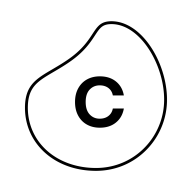
The 3 Technologies Driving Accounts Receivable Transformation
Few years have been as financially (or generally) disruptive as 2020. And few areas of the business have been impacted quite as acutely as Accounts Receivable (A/R).
With economies shrinking, entire industries sunsetting tools, and established companies disappearing, businesses have once again been forced to refocus on the importance of cash. And with the world’s collective purse-strings tightening, effective payment collection has become an even tougher task than it was before.
But, things are looking up for 2021. By all accounts (pun intended), this should be the year of recovery. And for A/R teams, that means a return to stability, the opportunity to learn from 2020’s challenges and an exciting chance to define the department’s ‘new normal’.
With short-term survival now ensured for many, A/R transformation has retaken its rightful position at the top of the function’s agenda – and technology has a huge role to play in that. From improving productivity and accelerating collections, to streamlining decades-old processes, there are a huge number of ways that a small handful of core technologies can impact and improve A/R operations.
This year, there are three specific technologies that we’ll likely see most teams focus their time and budget on: Process Mining, Machine Learning (or Artificial Intelligence depending on your level of sophistication), and automation.
Here’s why.
Tech focus area #1: Process Mining
Before you can run collections at maximum capacity, you need to find the execution gaps in your team’s processes — the all-too common errors, inefficiencies and delays getting in the way of performance, from out-of-date master data to incorrect invoices. That’s where Process Mining comes in.
Process Mining enables you to intimately understand your A/R processes at every level – from cash processing to credit management – and uncover your execution gaps, and their root causes. Delays within your collection procedures, for example, could be caused by a number of obstacles that prevent a vendor paying quickly – like outdated, overly lenient credit terms that a customer continues to use. Process Mining gives you complete visibility of how A/R runs, so you can fix these inefficiencies quickly.
Put simply, for those considering Accounts Receivable transformation, Process Mining helps them understand exactly where and how their processes need to change to have the biggest impact on productivity, efficiency, and cash collection.
However, Process Mining’s primary goal is to provide transparency – it doesn’t act on those insights for you. Alone, it merely informs transformation – but still requires some elbow grease from your team to turn insights into action. As a result, it often doesn’t generate the same excitement that other new technologies (like automation and AI) do, causing many teams to continue to overlook the incredible value it can deliver.
Tech focus area #2: Machine Learning and AI
Process Mining can offer deep insights into internal processes, and crucially, it can provide the data that you need to learn about your customers, their behavior, and critically, how likely they are to pay you.
This is where machine-learning algorithms come in. By implementing AI and ML technology, you can get deep insights from your data and benefit from a complete 360-degree view of your customers. This gives you a more reliable view of the payments that you need to chase up, and when and how to act to maximize collections.
For example, AI-powered analytics can detect customer anomalies – like when a customer’s payment or communication pattern changes. The technology can then indicate possible future payment issues, and predict the impact this could have on your organization, giving your teams the insight they need to avoid payment delays.
But however you apply it, the insights you get will only be as good as the data you put in. So, to make the most of this powerful technology, you need to ensure you have enough high-quality, clean data before you apply it.
Tech focus area #3: Automation
Automating basic processes – including communications about overdue payments or due dates, or filling in certain forms – will be key to optimizing A/R in 2021.
By reducing repetitive tasks and manual data entry, you can give your skilled collectors more time to focus on the things they do best – the high-value tasks that require their specific skills and directly lead to increased collections.
And there’s more to it than just Robotic Process Automation (RPA). Take, for example, tasks that typically require judgment and intelligence to be able to act effectively — such as updates to an incorrect price on an invoice. Traditionally, this would require manual verification of the appropriate price and validation through contract view and email confirmation. By deploying machine learning in partnership with automation to review documents and predict the correct price with a certain level of confidence, this kind of activity can be automated too. In tandem, using automation to clean and collect data prior to AI and ML analysis can have a massive impact on their outputs, and increase the value and accuracy of the insights they deliver.
But just as AI and ML relies on clean, high-quality data, automation has to be backed up by powerful, reliable insights – and you need a clear, critical understanding of your processes. If the processes you choose to automate are flawed, you risk automating inefficiencies, at significant cost to you down the line.
Successful Accounts Receivable transformation requires all three
Process Mining, AI and automation all have the potential to transform your A/R department and empower your people to collect more payments, faster. However, when deployed alone, each has its own limitations.
Truly effective A/R transformation requires a strategy that combines all three. When combined intelligently, each can benefit the other. Insights from Process Mining or AI, for example, can inform which tasks you automate. While automating data collection and cleaning can improve the quality of AI and ML insights, without increasing workload. Leveraging the insights from Process Mining and the intelligence of AI, you can achieve smart workflow automation that actually has impact.
As A/R teams build back from the financial challenges of 2020, these three technologies will play a huge role in improving efficiency, reducing delays, and optimising collections. In our next few articles, we’ll dive into each of these evolving tech areas in greater detail, providing practical advice for applying AI and ML, Process Mining or automation to your A/R department, as well as exploring the common challenges you may face during adoption.
To make sure you don’t miss out, be sure to subscribe to our blog. Or to see how Celonis can help you start your A/R transformation journey, take a look at our Execution App for Accounts Receivable.






